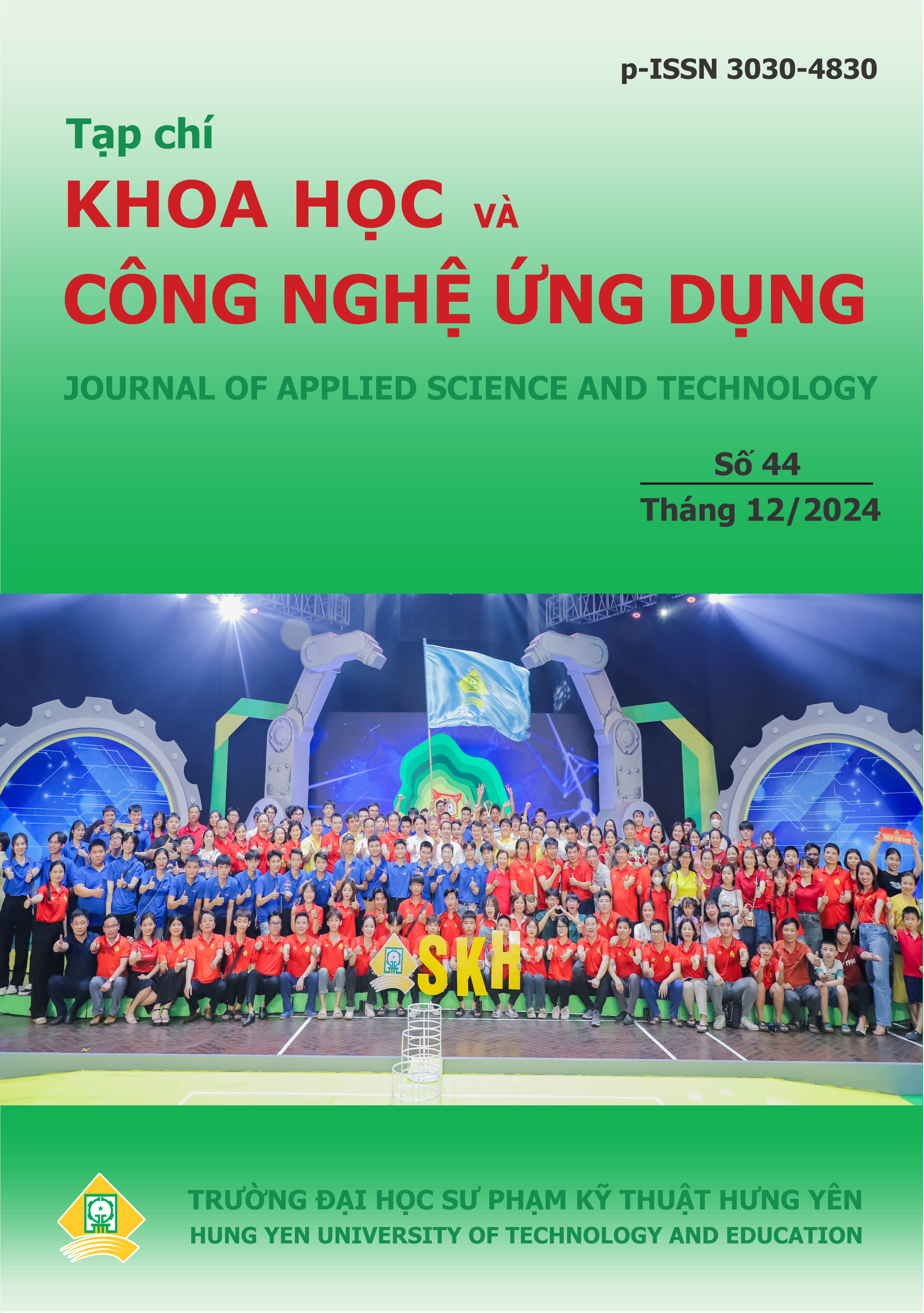EFFECT OF INTAKE TEMPERATURE ON THE COMBUSTION CHARACTERISTICS OF GASOLINE FUEL WITH COMPRESSION COMBUSTION MODE OF GASOLINE FUEL
Abstract
The intake air temperature is an important factor that determines the combustion characteristics of the GPPC combustion model, controls the formation of diffuse combustion, and has a direct consequence on the formation of toxic emissions of HC, CO, NOx and soot in the GPPC type. In this study, the author investigates that the injection time changes with the operating conditions being kept constant: keeping the injection mass ratio fixed at 50-50, the pilot start of injection -35 CAD ATDC and the main start of injection time at the point of injection. top dead, engine rotational speed 1500 rpm, intake air temperature varies from 165 oC to 205 oC, intake pressure 1 bar and injection pressure 400 bar. Through the experimental results, the simultaneous effects of the combustion process with the cold flame and the jet of the penetrating main injection are evaluated to affect the combustion rate of the main combustion process. In addition, the maximum combustion temperature, the rate of increase of pressure in the cylinder and the combustion efficiency and indicator efficiency of the engine are also evaluated to find the impact of intake temperature on operating mode of the engine.
References
Greenhouse Gas Emissions and Fuel Efficiency Standards for Medium-and Heavy-Duty Engines and Vehicles-Phase 2 Regulatory Impact Analysis Final Rule, 2016.
Johnson T V. Diesel Emission Control in Review. SAE Int J Fuels Lubr, 2009, 2, 2009-01–0121. https://doi.org/10.4271/2009-01-0121.
De Ojeda W, Rajkumar M. Engine Technologies for Clean and High Efficiency Heavy Duty Engines. SAE Int J Engines, 2012, 5, 2012-01–1976. https://doi.org/10.4271/2012-01-1976.
Neely GD, Sasaki S, Huang Y, Leet JA, Stewart DW. New Diesel Emission Control Strategy to Meet US Tier 2 Emissions Regulations, 2005. https://doi.org/10.4271/2005-01-1091.
Kalghatgi GT, Risberg P, Ångström HE. Partially pre-mixed auto-ignition of gasoline to attain low smoke and low NOx at high load in a compression ignition engine and comparison with a diesel fuel. SAE Technical Papers, 2007. https://doi.org/10.4271/2007-01-0006.
Chang J, Kalghatgi G, Amer A, Viollet Y. Enabling high efficiency direct injection engine with naphtha fuel through partially premixed charge compression ignition combustion. SAE Technical Papers, 2012. https://doi.org/10.4271/2012-01-0677.
Bengt Johansson. High-Load Partially Premixed Combustion in a Heavy- Duty Diesel Engine, Diesel engine emission reduction (DEER) conference 2005, Chicago, Illinois, 2005.
Yin L, Ingesson G, Shamun S, Tunestal P, Johansson R, Johansson B. Sensitivity Analysis of Partially Premixed Combustion (PPC) for Control Purposes. SAE Technical Papers, 2015, 2015-April. https://doi.org/10.4271/2015-01-0884.
Manente V, Johansson B, Tunestal P. Partially premixed combustion at high load using gasoline and ethanol, a comparison with diesel. SAE Technical Papers, 2009. https://doi.org/10.4271/2009-01-0944.
Manente V, Johansson B, Cannella W. Gasoline partially premixed combustion, the future of internal combustion engines? International Journal of Engine Research, 2011, 12, pp. 194–208. https://doi.org/10.1177/1468087411402441.
Belgiorno G, Dimitrakopoulos N, Di Blasio G, Beatrice C, Tuner M, Tunestal P. Parametric Analysis of the Effect of Pilot Quantity, Combustion Phasing and EGR on Efficiencies of a Gasoline PPC Light-Duty Engine. SAE Technical Papers, 2017, 2017-September. https://doi.org/10.4271/2017-24-0084.
Noh HK, No SY. Effect of bioethanol on combustion and emissions in advanced CI engines: HCCI, PPC and GCI mode – A review. Appl Energy, 2017, 208, pp. 782–802. https://doi.org/10.1016/j.apenergy.2017.09.071.
Wissink M, Reitz RD. Direct Dual Fuel Stratification, a Path to Combine the Benefits of RCCI and PPC. SAE Int J Engines, 2015, 8, pp. 878–89. https://doi.org/10.4271/2015-01-0856.
Rickard Solsjö, Mehdi Jangi BJ and X-SB. The Role of Multiple Injections on Combustion in a Light-Duty PPC Engine. Energies (Basel), 2020.
Tanov S, Collin R, Johansson B, Tuner M. Combustion Stratification with Partially Premixed Combustion, PPC, using NVO and Split Injection in a LD - Diesel Engine. SAE Int J Engines, 2014, 7, 2014-01–2677. https://doi.org/10.4271/2014-01-2677.
Rusly A, Kook S, Hawkes E, Zhang R. High-Speed Imaging of Soot Luminosity and Spectral Analysis of In-Cylinder Pressure Trace during Diesel Knock, 2014. https://doi.org/10.4271/2014-01-1259.
Shahlari AJ, Hocking C, Kurtz E, Ghandhi J. Comparison of Compression Ignition Engine Noise Metrics in Low-Temperature Combustion Regimes. SAE Int J Engines, 2013, 6, 2013-01–1659. https://doi.org/10.4271/2013-01-1659.

